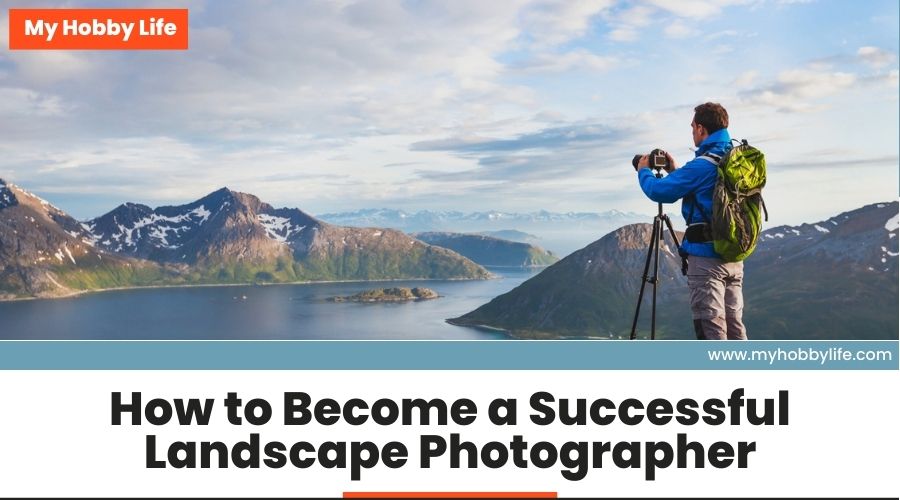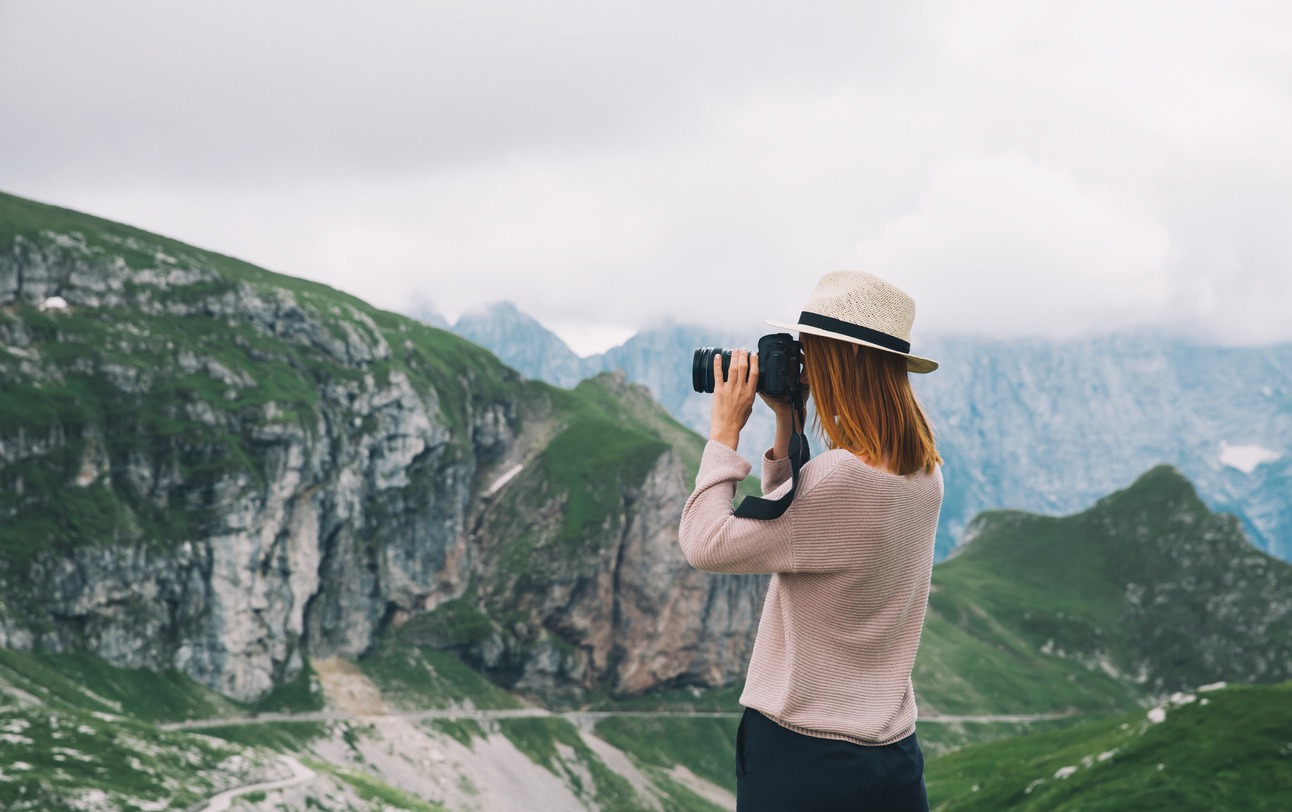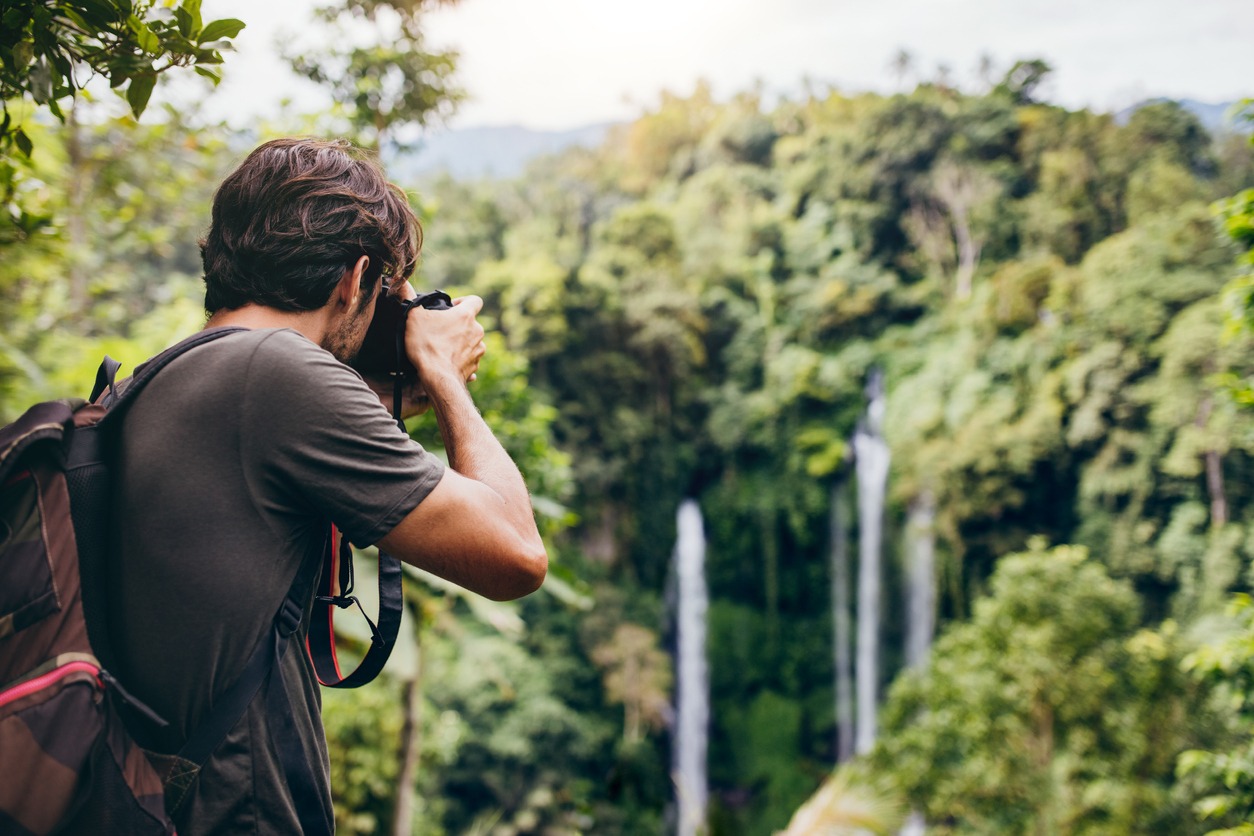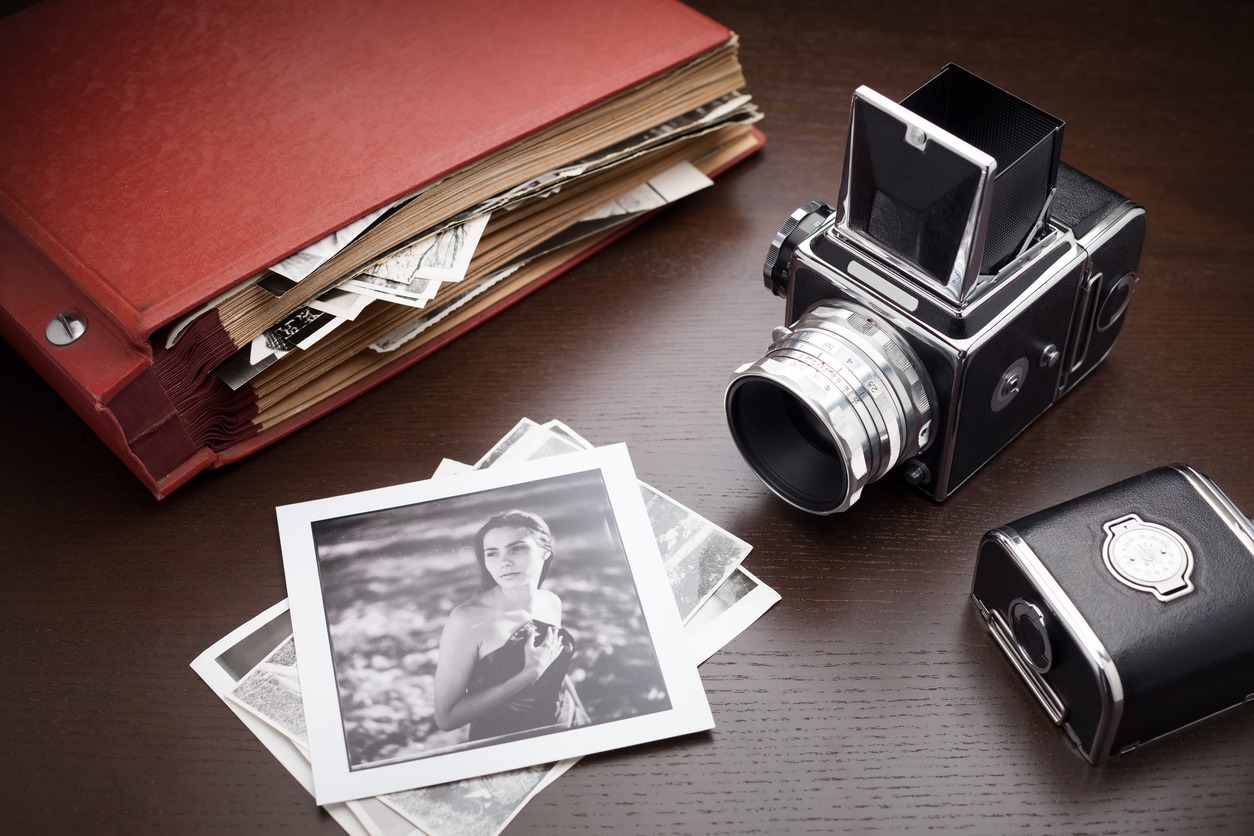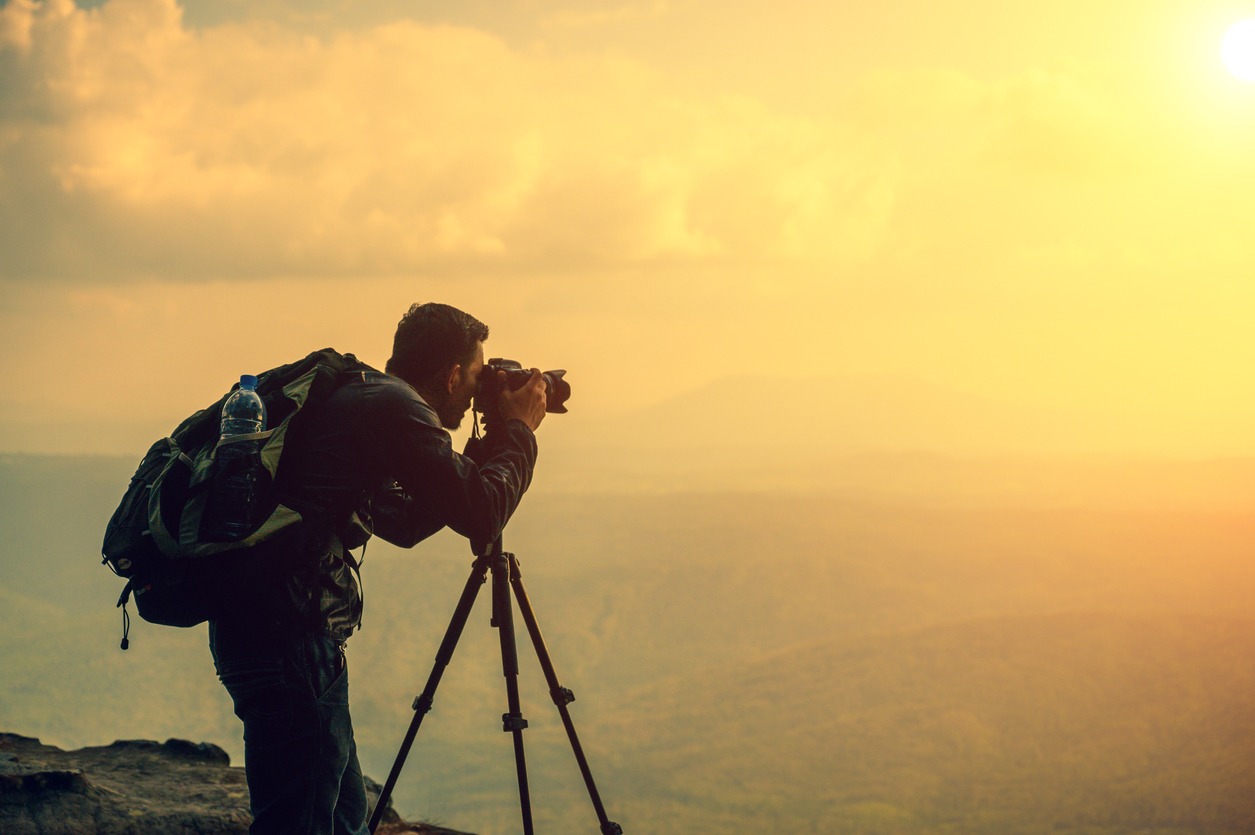Becoming a landscape photographer may not be everyone’s ideal job but it can have many rewards. The market may be saturated, but not everyone does work that carries meaning. You cannot ignore the attraction of an amazing shot, which should keep you motivated.
Getting into photography is easier than it was in earlier times. You have the internet and the experience of hundreds of professionals available to get going. There is an opportunity, and you must grab it to become a successful landscape photographer.
We will start with the types of landscape photography and cover all the important aspects this exciting field includes.
Types of Landscape Photography
You have many options to choose from when it comes to the types of landscape photography. Knowing more about the types will help you pick a field you can enjoy and learn more about as time progresses.
Landscape photography can be divided into three main categories:
Representational
This category of landscape photography involves photos that appear very realistic or natural. The images look as if no editing has been done, with the scene coming to the viewer straight from the beautiful location. In this type of landscape photography, the lighting and composition must be good enough to achieve the desired result. There are many things that you need to consider when it comes to using natural and artificial lighting for photography. To know more, read the Ultimate Guide to Lighting for Photography.
Impressionistic
This style of landscape photography focuses on editing and effects that make the photo look unreal or ‘out of this world.’ In this type of photography, depicting the sense of reality is not the goal. The photographer creates an impression of the landscape rather than its authentic look.
Abstract
This type of landscape photography focuses on the different components of a landscape and projects them in a different style. Items and angles not covered by traditional landscape photography methods are brought to light through various lighting techniques and specific views.
So these are the main categories of landscape photography as they encompass the different creativity levels a professional landscape photographer can showcase.
Types of Subjects in Landscape Photography
The types of subjects also differ in the field of landscape photography. Some of the main types are mentioned below:
Sunrises and Sunsets
Landscape photographers are always a little in love with sunrises and sunsets because each day brings a new kind of beauty to the mix. Both these subjects are highly dependent on light, which makes the weather an important consideration for shooting these scenarios. For photographing these subjects, try to reach and set up an hour early, so you don’t miss any detail. Sunrises are more difficult because you have to wake up very early, but the best thing about sunrises is that there are few people around.
Seascapes and Coastlines
Coastlines are tricky because you want to photograph constantly moving water. These images are difficult to compose, and lighting is also tricky. Spraying water can also damage your equipment and leave a residue. However, once you get the hang of it, you can figure out the best timings and light effects and capture the subject’s essence in the best possible manner.
Forests
Forests have so much to offer to a landscape photographer. Morning and nighttime shots are always interesting as light also becomes important. Overcast and cloudy conditions are best for photographing forests during the day, as sunlight can harshly affect the resulting images.
Deserts
There are many unique scenes and objects in the desert. It is one of the best subjects to portray various textures and patterns of nature. Desert lighting is also very attractive, especially during nighttime.
Black and white
If you wish to show a landscape in its simplicity, a black-and-white effect never goes out of fashion. High contrast and texture bring out the best in such subjects.
Long exposure
Long exposure is a technique that creates a blur in motion and adds depth to your photographs. You can capture it with a slow shutter speed and add more light to the camera as you capture motion.
Nighttime
The most dedicated landscape photographers have the knack for staying up with night owls to capture the serenity of nighttime. You can use a long exposure to capture the stars and get better each day as you play with lighting effects.
Architecture
Landscape shots do not always involve natural scenes because many modern structures look just as breathtaking from the right lens. High resolution and good lighting can bring out the best in modern landscapes of cities and towns.
An idea of the subject you wish to capture also helps a photographer gather the best equipment for work. It also helps you plan your day and focus on capturing that perfect shot.
How Much Can You Earn With Landscape Photography?
In the United States, the average salary of a landscape photographer ranges from $10,714 to $288,163. The average amount is about $50,000 a year, but most landscape photographers are self-employed, so there is no set cap on the earnings. You can set your own schedule and office space with a flexible approach.
How to Start a Career in Landscape Photography
How do you break into landscape photography? Here are some easy tips for those wishing to start:
Go to Hikes
It is easy to dream of going on a hike than going to an actual hike. Instagram photos and videos make it look very dreamy, but the reality is exactly the opposite of it. Going on a hike requires being fit and mentally prepared for all the things that come with the package. If you are too busy or not in shape, this can become your number one problem.
So start your expedition by planning for and executing a successful hiking trip. It will involve preparing mentally and physically and choosing the best gear for the trip. Getting a pair of hiking shoes and a backpack will significantly help. Once you execute a hiking plan and photograph some amazing shots, there will be no stopping you from what comes next.
Learn the Art of Compressing Images
Now that you have some great photographs from your first expeditions, you will realize that the photos are too heavy to upload or share anywhere. The hardest part about photography is learning to compress images. What looks good to your eyes does not necessarily make a good photograph. You need to factor in all the elements by editing, composing, and compressing to make a photo pleasing to the eye of a viewer.
Get on Social Media
Once you learn to take and store amazing photographs, it will be the perfect time to get on social media and spread the word about your skills. Make sure that you post high-quality media and that there is no pixelated media involved. The images must look perfect every time, even if it involves posting one good photo or video weekly. Putting effort into your first few posts will show potential clients that you are very serious about your work.
Make a Website
With a good collection of stunning photographs, a website should be your next place to be. Build a website that is not too detailed but has all the elements that showcase your work in an impressive template. Watermarks should become your best friends by now, so make sure you also have a simple logo and colors to design posts and use on the website.
The goal of a website is to build trust with first-time and returning clients. You need to show the world that your work is great and you know the art of showing it beautifully.
Photograph Your City/Town
There is no need to spend money initially to shoot a famous landmark when you can start photographing your town. With time, your thirst for getting good shots will increase, so go out and look around your city/town for some inspiration.
Attend Local Photography Events
Many networking events can introduce you to people who are just as passionate about photography as you. Now that you have a social media presence and an archive of photos, you should attend photography events and meet like-minded individuals. If you have covered all the local scenes, you can travel to a meetup in a scenic location to expand your portfolio and make new friends along the way.
Enter Photo Competitions
Doing all the hard work also allows you to have some fun. You can submit your work to photo competitions and enjoy the exposure. There are so many competitions that also pay the winners a handsome amount. Moreover, you can get new clients who can take you to more uncovered terrains to photograph.
Craft Your Story
Every successful personal brand starts with a story. Write your story and how it inspired you to get where you are today. People who build a story around your work get high praise because it carries more value. For example, photographing an endangered species of animals to raise awareness is a beautiful story. A narrative around photographs makes them more special.
Make a Portfolio
Getting more and more traction on the field should help you spot your best work to date. Now you can build an impressive portfolio to show to potential clients and friends over a cup of coffee. Get a set of photos that cover every location you have been to and cover various aspects of your creative work.
A photo book is also a cheap and effective way of marketing your landscape photography work. Photo books also look nice on book racks and make a conversation starter on coffee tables. There is no better feeling than seeing your work in a good, glazed, and printed format.
Get Publications to Feature Your Work
When building your career, you can get in touch with online and print publications to get your work featured. This helps build trust around your work and gets new followers/clients. Use the help of podcasters, YouTubers, and influencers, as it is one of the best channels to promote your work.
Keep Working on Your Skills
With the love of landscape photography in your heart, you will always be an avid student. Make sure you are always seeking new tips and going to new places. Help other budding photographers as you build your career because everyone can teach you something new.
Equipment
Photographing landscapes is a job that keeps you on the go at most times. You need equipment that is sturdy and can survive the test of time and travel. Photographers take their equipment to many places that are mostly outdoors. So it is essential to choose the right equipment which also doesn’t weigh down your travels.
Camera
You need a camera that can capture every little detail in high resolution. If you use a camera with a DSLR (Digital Single-Lens Reflex), it will probably work the best. It will give you more range and more variety in camera settings. Choose a camera that offers as many megapixels as possible for good detail-oriented photography.
Look for a camera that also offers long battery life when you shoot a long project away from a charging port. Some of the best photographs happen in conditions where a charging source is nowhere to be found. Below, we’ve created a table highlighting some of the best cameras you could invest in (depending on your situation).
| Brand | Model | Budget | What Makes It Suitable |
| Nikon | D5600 | $$ | Great APS-C sensor |
| Canon | EOS 90D | $$$ | 32.5 MP crop sensor |
| Nikon | D780 | $$$$ | 33 MP full-frame sensor |
| Fujifilm | X-T4 | $$$$$ | High-res shot mode |
You can buy these cameras on Amazon and other marketplaces.
Lens
Lenses of good quality with different features can draw attention to many aspects of a shot. A standard lens shows an image just like the naked eye. So this lens will be perfect for the representative kind of photography.
Wide-angle lenses are some of the most sought-after equipment for landscape photographers because they have too much to offer. Photos from a wide-angle lens eliminate the need for cropping and cover a larger area.
A telephoto lens is also a good piece of equipment that allows the photographer to zoom in on a shot and focus on one element. Cool, blurred background images look very impressive when taken from a telephoto lens as they stand out from the background.
Tripod
Landscape photography happens best with the use of a tripod. A tripod makes it easier to capture a full scene and allows one to maintain clarity in a photo.
Tripods keep your camera still, which is impossible to achieve when holding a camera with your hands. Long-exposure photos take much time to complete as there is a slower shutter speed. Holding your camera with your hands for this long will not result in good long-exposure photos.
Tripods also help you prepare that perfect angle and shoot in good light and overall conditions. You don’t want to change your location once you have found a good place to photograph; a tripod is your best friend.
Other Pieces of Equipment
While a camera, lens, and tripod are the most important tools for a photographer, there are some other pieces of types of equipment that can make your work easier and better:
- Extra set of batteries
- Waterproof backpack
- Remote trigger to avoid any movement when pressing the camera button
- Filters for better shots
- Comfortable shoes for treks and travels
Trainings and Certifications for Landscape Photography
In the United States, landscape photography is not licensed or regulated. A quick call with your local government can confirm this for you in your country/city. It is still extremely beneficial to train and earn a certification in a field you wish to work in. You can save time by avoiding mistakes and learning from the pros. Knowing the difference in mistakes will help you deliver better work half the time.
Many pieces of training are always open and taking in clients in landscape photography. You can enroll in an online course or find a good tutor around you. Most of these courses are affordable, so you don’t have to put a dent in your wallet. Courses that offer DVDs and downloadable material are a little more expensive but just as effective.
Finding Clients
A business card and a website should be the basic goal for your marketing toolkit. It can help you get more clients and get your work out there without asking someone for favors.
Conclusion
Landscape photography beginners should learn all they can and never be demotivated by initial mistakes. Build your equipment kit as time progresses, and always be thirsty for knowledge. Over time, you will start developing a process and know the exact equipment your work requires. Keep going, and tell your story to the world!
